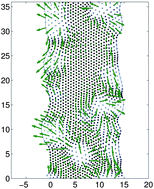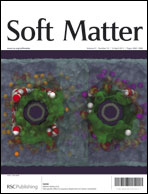A continuum model of epithelial spreading†
Abstract
We propose a continuum model of unconstrained epithelial spreading. The tissue is described as a polarizable and chemo-mechanically interacting layer with neo-Hookean elasticity. Our model reproduces the spontaneous formation of finger-like protrusions commonly observed in experiment. Statistics of the velocity orientation obtained from numerical simulations show a strong alignment within the fingers, as opposed to an isotropic distribution in the bulk. The results faithfully reproduce the relatively faster advance of cells close to the leading edge of the tissue, as well as experimentally observed spatial velocity correlations and stress accumulation within the tissue.


 Please wait while we load your content...
Please wait while we load your content...